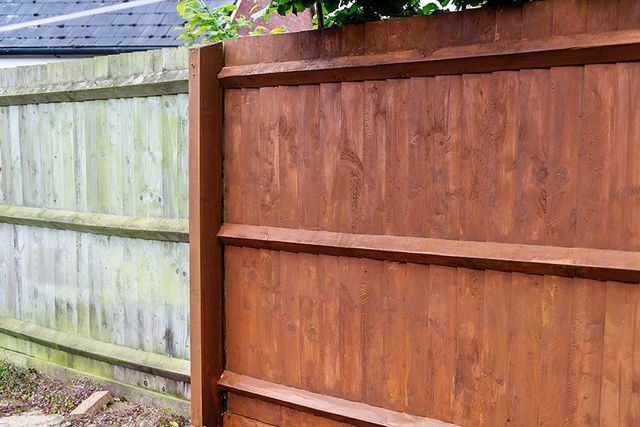Exactly How to Pick the Right Fencing Spot for Your Residential Property
When it comes to boosting the appearance and longevity of your home's fence, choosing the appropriate tarnish is an essential decision that calls for careful consideration. With a myriad of options available out there, each accommodating various wood kinds, shades, and openness levels, the procedure can swiftly become frustrating. Nevertheless, making an educated selection can substantially influence the general looks and long life of your fence. So, just how can you guarantee that you choose the excellent fence tarnish that aligns with your home's design and maintenance needs? Let's check out some key aspects to lead you in this decision-making procedure.
Recognizing Wood Types
To select the proper fencing discolor, it is necessary to have a detailed understanding of the different types of timber commonly made use of for secure fencing. When choosing a fencing discolor, it is crucial to think about the kind of timber being made use of to ensure compatibility and optimal protection. Comprehending the attributes of different wood kinds will help you make a notified decision when it comes to picking the right fencing discolor for your residential property.
Picking the Right Shade
Choosing a proper shade for your fence discolor is a vital choice that dramatically affects the overall aesthetic allure of your residential property. Lighter colors such as whites or light grays can make a fencing show up bigger and include a touch of beauty to your residential property. Eventually, the right shade selection will certainly enhance the beauty of your fencing and boost the overall curb appeal of your home.

Taking Into Consideration Openness Degrees
When picking the appropriate shade for your fence stain, another important facet to consider is the level of transparency that will certainly finest suit your building's visual and maintenance requirements. Transparency levels in fencing discolorations usually come under three categories: transparent, semi-transparent, and solid. Clear discolorations enable the natural charm of the timber to show through while offering very little defense versus the aspects. They are optimal for brand-new or well-kept fencings where showcasing the wood grain is a top priority. Semi-transparent stains offer an equilibrium between shade enhancement and protection, permitting some wood grain to be noticeable while offering modest securing from UV rays and wetness. Strong discolorations, on the other hand, give the most defense as they completely cover the timber with a nontransparent coating. These are appropriate for older fences or those in need of considerable defense or color adjustment. Take into consideration the level of exposure your fencing deals with, the desired upkeep regularity, and the aesthetic you Full Article wish to attain when selecting the ideal openness level for your fencing stain.
Reviewing Upkeep Needs
Taking into consideration the durability and upkeep of your fence, examining the upkeep requirements is important in determining the most appropriate fencing discolor for your residential or commercial property. The level of maintenance required for your fencing can differ relying on variables such as the kind of timber, climate condition in your area, and your individual choices.
When assessing maintenance requirements, it is important to think about the longevity of the fencing tarnish. Some spots need even more regular reapplication than others, so picking a discolor with a longer life-span can help in reducing the overall upkeep demands of your fencing (Fence Staining Service). In addition, elements such as resistance to UV rays, water, and mildew can impact just how often you require to re-stain your fence

Examining Samples Before Application
Prior to applying any kind of fencing stain, it is recommended to perform example examinations to make sure compatibility with the wood and desired aesthetic end result (Fence Staining). Evaluating examples permits you to assess exactly how the discolor will interact with the certain kind of timber made use of in your fencing, as different woods can absorb stains in different ways. To begin, pick a small inconspicuous area of the fencing to use the tarnish examples. It is recommended to test numerous tarnish options on this section to compare shades and coatings. Take into consideration how the stain looks when dry, as it may show up different from its wet application. Furthermore, observe how the tarnish enhances the existing components in your outside room, such as landscape design or the color of your home. Keep in mind of exactly how the discolor stands up to weather like sunshine and dampness. By examining examples before complete application, you can make an enlightened choice that enhances the overall appearance of your home while protecting the timber effectively.
Conclusion
In verdict, selecting the proper fencing stain for your residential property involves recognizing the timber kind, choosing the appropriate color, taking into consideration transparency degrees, assessing upkeep needs, and testing samples prior to application (Fence Staining). By taking these aspects right into consideration, you can guarantee that your fencing stain matches your home while giving the needed security and resilience. Make a notified choice to enhance the look and durability of your fencing